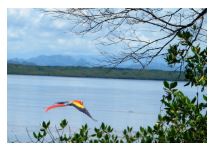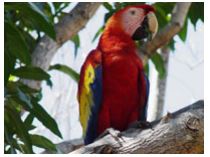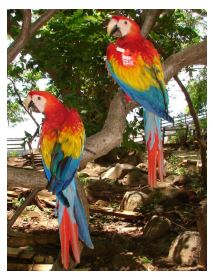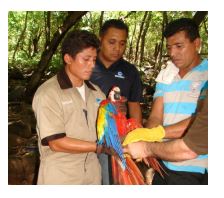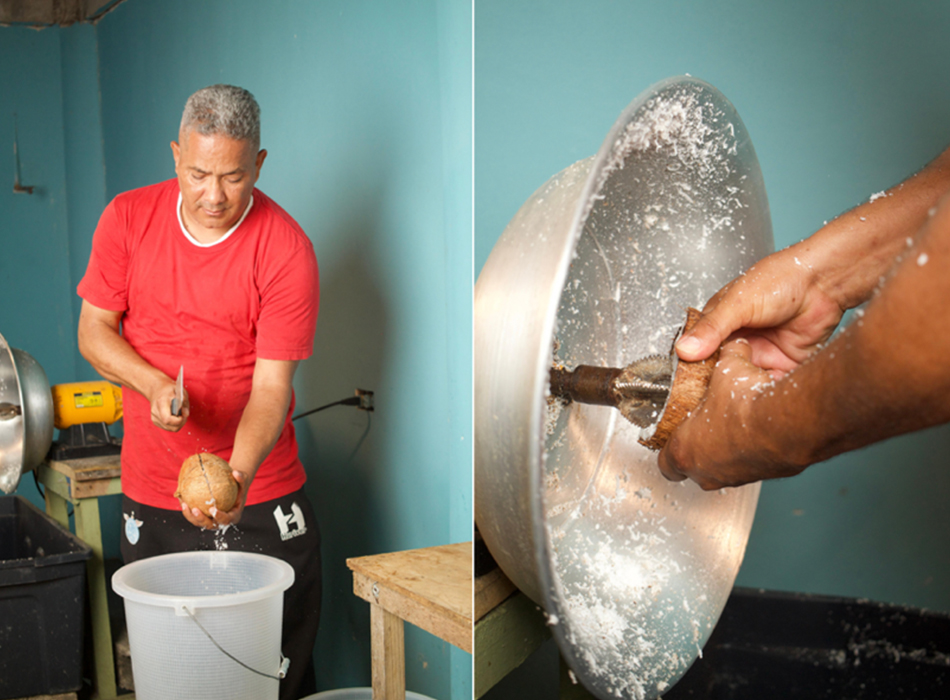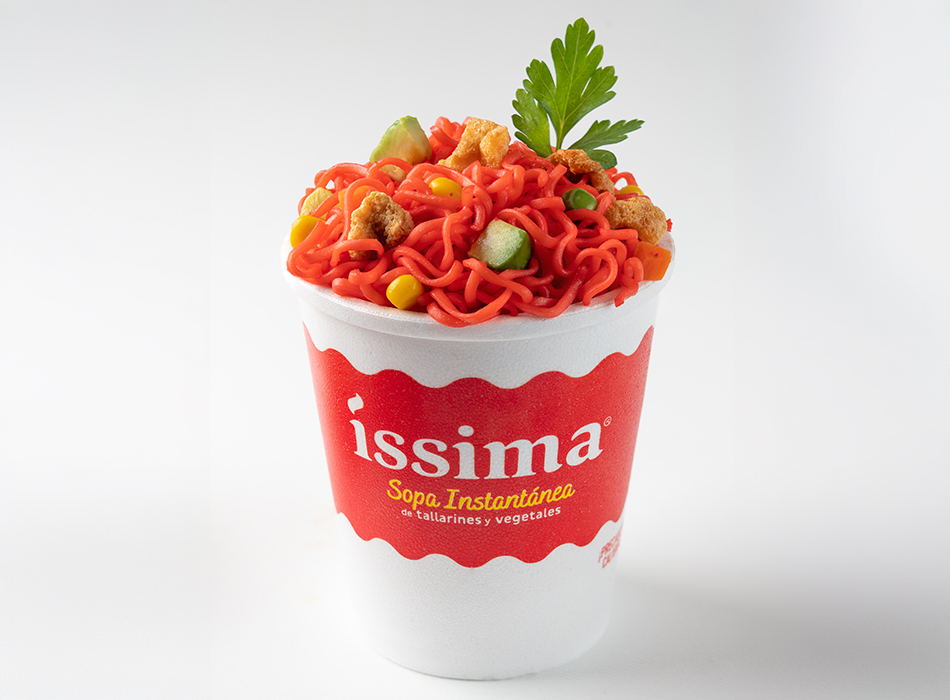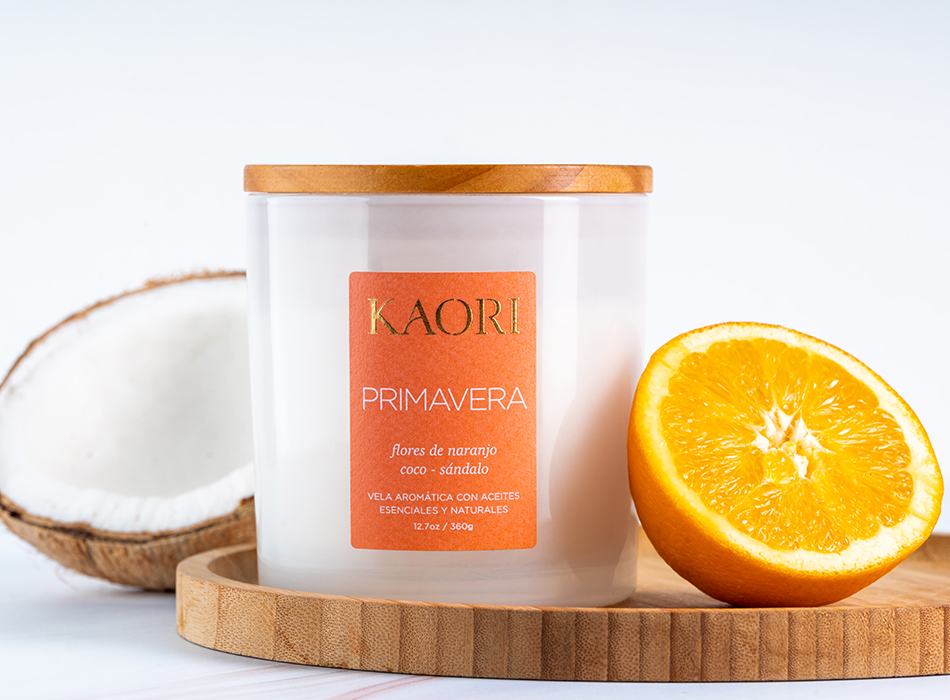Red macaws are protected with banding and international mark
* It’s the first time in the Central American region with released birds.
By: Ramón Wilberto Nuila Coto, Msc,
Email: ramonnuila@yahoo.es
The red macaws that freely inhabit the Zacate Grande Island, Amapala municipality at Valle department, in the Fonseca Gulf of Honduras, are once again international news, since their management, monitoring and protection has a new scientific technical tool in its favor: the banding and marking.
For the first time in the Central American region, these birds (Ara Macao), which are a Honduran National Symbol, are professionally banded and marked without affecting their lives in freedom in their natural habitat. This past June 20th, the Dinant Biological Station of Zacate Grande started this innovative process, which without a doubt is of excellent value in the protection of these birds that are listed as worldwide endangered.
What is bird banding and marking?
Banding or marking of birds is a worldwide technique used to obtain information about certain species. The techniques vary from placing a metal or plastic ring on the animal leg, a wing band on the wing patagium or the insertion of a digital or satellite tracking device on the bird skin.
With the banding and marking, relevant information is obtained regarding the physical condition, movements and migration patterns, birth, mortality and survival rates of the banded birds, as well as the populations to which they belong. To carry out banding or bird marking, a special training is required to ensure the welfare of the specie and the quality of the information collected. All the bands report the information to databases in charge of monitoring the information.
The success of any generalized marking or banding program depends on the collaboration and union of efforts to maximize results. For more than a hundred years, biologists, ornithologists or amateurs in general, have been banding birds to obtain valuable information, the objective was initially to understand the movements of birds in their space. However, we now know that this is only one of the important things that can be achieved.
The banding techniques are also used to obtain different information such as:
1.Knowledge about bird movements-for example, establish migration, find relationships between breeding and wintering sites, identify different populations, following-up with distribution ranges and colonization, measure the scattering within populations, and quantify gene exchanges between populations – a very valuable information for the planning of integrated systems of protected spaces for birds.
2. To estimate demographic parameters and to determine the dynamics of bird populations, - for example, to estimate the annual production of young birds, or the annual survival according to age, to build population dynamic models for the prediction of extinction probabilities, the separation of source populations and comparing survival rates between rehabilitated and wild populations.
3. Ecological research that requires the identification of individuals - for example, the estimation of territories sizes, or the examination of the importance of resting sites during migrations through the knowledge of temporary permanence and individual weight gain, as well as the habitat selection, dominance hierarchies, moving strategies and patterns, and the parasites inside of them.
4. The monitoring of populations and individuals, - for example, the monitoring of threatened species, the identification of declining populations, such as the decrease of successful reproduction as well as the recruitment of them; the establishment of population trends, and the validation of other population monitoring techniques.
Conservation efforts have benefited from this type of study. Moreover, just the fact of understanding the movements and scattering of birds is an integral part of the knowledge on how the abundance of birds is maintained in nature. As environmental conditions change, either due to global natural climate cycles or modified by human actions such as global warming, the migratory behavior of birds can also change.
It is considered of significant importance that bird banding efforts continue in all species, to identify changes in migration, scattering and abundance patterns.
The main goals of banding and marking red macaws of the Dinant Biological Station are: to identify the displacement routes of birds in the Fonseca Gulf, to define the mortality rate of little birds marked and tagged at the station and to generate information for the national or international scientific community that can be used in different programs of natural or artificial reproduction, fighting for the conservation of this beautiful specie that is worldwide endangered and is a national symbol of the Honduras Republic.
This is the first time that this type of marking is done with red macaws in Honduras, the procedure consisted in the placement of a metallic ring in the leg of each of the 4 chicks born in natural nests and an alar band placed in the wing patagium of each of them, the rings were donated by the World Parrot Trust and the wing bands were purchased by Dinant from the Spanish company Maquia, world leader in manufacturing this type of tracking and marking devices for animals. These bands have 2 codes, one in letters (MF in honor of Miguel Facusse, sponsor of this Biological Station) that works to define the origin of the birds and the other one in numbers (01, 02, 03, etc.), to carry the numerical correlative of marked birds.
For more information on this topic, consult:
Dinant Biological Station Zacate Grande
Environmental Division of Dinant Corporation
Phone: (504) 2239-8032
Email: ambiente@dinant.com

